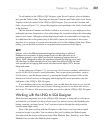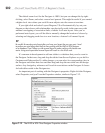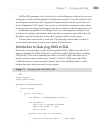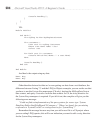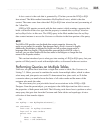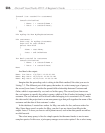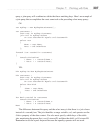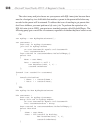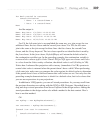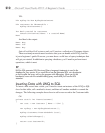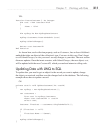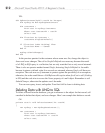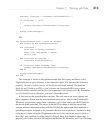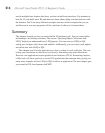
Chapter 7: Working with Data 209
For Each custOrd In customers
Console.WriteLine(
" Name: " & custOrd.Name &
" Date: " & custOrd.Date)
Next
And the output is
Name: Meg Date: 1/1/1800 12:00:00 AM
Name: Joe Date: 1/5/2010 12:00:00 AM
Name: May Date: 10/5/2010 12:00:00 AM
Name: May Date: 10/23/2010 12:00:00 AM
For C#, the left outer join is accomplished the same way as a join except for two
additional lines: the into clause and the second from clause. For VB, the left outer
join is the same as the join except for three lines: the Into clause, the second From
clause, and the Group keyword. The into clause specifies an identifier that is used by
the from clause. In the from clause, DefaultIfEmpty will return the default value for
the continuation variable type. In the preceding example, the continuation variable is
customerOrders whose type is Order. Since LINQ to SQL types are classes and Order
is a class from the Orders entity collection, the default value is null (Nothing in VB).
Notice how I enhanced the projection with a ternary (immediate if in VB) operator to
control what value is returned when the parent doesn’t have a child. When performing
a left outer join, make sure you compare the value against its default value to determine
if the parent doesn’t have a child and ensure that valid values are set. Not only does the
preceding example demonstrate how to check for a default value, but it also shows that
you can use expressions in your projections.
In addition to LINQ queries, you can call stored procedures. As you may recall from
the previous discussion on working with the LINQ to SQL Designer, I described how to
drag and drop a stored procedure from Server Explorer to the design surface. Adding the
stored procedure to the design surface also added a method to the data context. Here’s
how to use that method:
C#:
var myShop = new MyShopDataContext();
var customers = myShop.GetCustomers();
foreach (var cust in customers)
{
Console.WriteLine("Name: " + cust.Name);
}



